CNN —
If you feel wide awake when your head hits the pillow at night, you’re not alone. Approximately 60 million Americans report having experienced insomnia in any given year, according to the National Institute of Neurological Disorders and Stroke. Even worse, 40 million Americans suffer from long-term sleep disorders.
DailyBurn: 6 signs you’re exhausted (not just tired)
Missing sleep is nothing to yawn about. “Chronic sleep deprivation has lots of negative consequences,” says Sonia Ancoli-Israel, fellow of the American Academy of Sleep Medicine and Professor of Psychiatry at the University of California San Diego School of Medicine. She notes that the health risks associated with missed zzz’s can include poor cognitive function, problems with attention and concentration, dementia and an increased risk of heart disease.
Why every night of sleep matters
Are you getting enough shut-eye? Most adults need seven to eight hours of sleep a night, according to Dr. Ancoli-Israel. “People are so busy in their everyday lives and something has to give. They give up on sleep rather than something else,” she says.
They give up on sleep rather than something else,” she says.
DailyBurn: 10 ways you’re sabotaging your workout
Even if you don’t suffer from insomnia, odds are you’ve experienced nights when you’ve tossed and turned, wondering why you can’t drift off. “Everyone has a bad night now and then,” says Dr. Ancoli-Israel. But if you get tense and worried about not being able to sleep, your frustrated mindset could make it even harder to relax into slumber the following nights.
The consequences of missing even a few hours of sleep can be serious. Research shows that short-term sleep deprivation can cause you to crave high carbohydrate and high sugar foods. It can even make it harder to choose healthy options when grocery shopping. Plus, one sobering study revealed that drowsy drivers who had been awake for 18 hours were just as impaired as drivers who had been drinking.
Research shows that short-term sleep deprivation can cause you to crave high carbohydrate and high sugar foods. It can even make it harder to choose healthy options when grocery shopping. Plus, one sobering study revealed that drowsy drivers who had been awake for 18 hours were just as impaired as drivers who had been drinking.
DailyBurn: How bad is booze, really? 6 crazy facts about drinking alcohol
Fortunately, there are steps you can take to help ensure you’ll actually pass out once your head hits the pillow.
If you’re moving at full-speed all day, it can be tough to suddenly switch yourself “off” at night.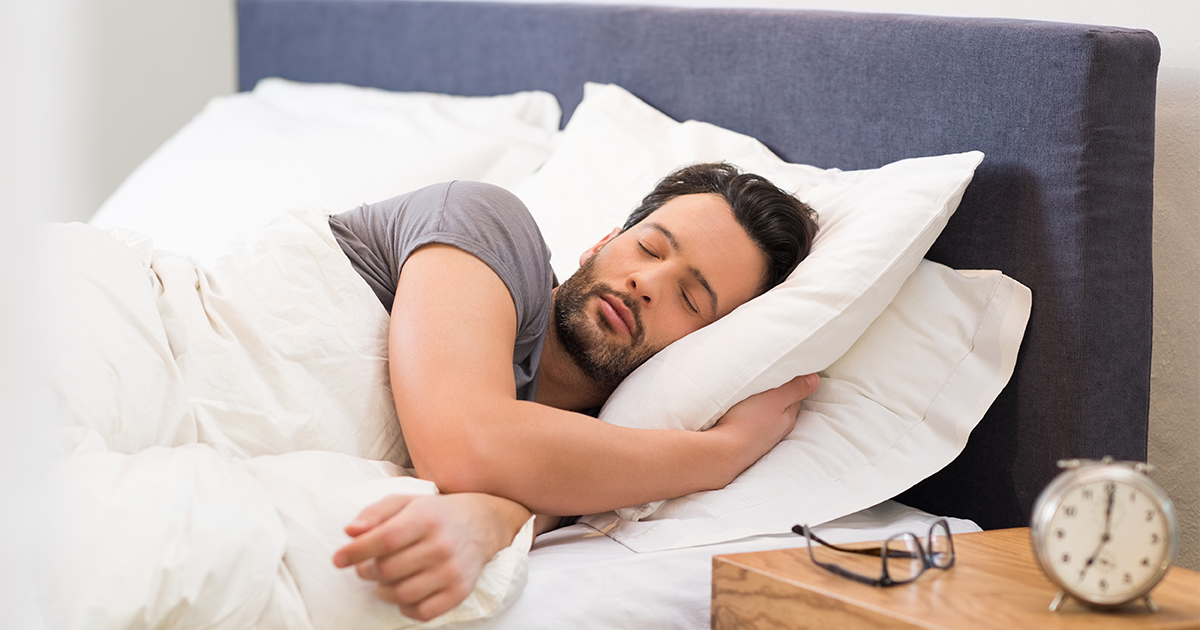 “We are assaulted by information all the time and it’s really up to us to create routines that help separate the buzzing of the brain from our sleep routines,” says Janet Kennedy, Ph.D., clinical psychologist, founder of NYC Sleep Doctor and author of The Good Sleeper: The Essential Guide to Sleep for Your Baby (and You). She recommends giving your mind and body a full hour to wind down from work (or happy hour) before you try to fall asleep.
“We are assaulted by information all the time and it’s really up to us to create routines that help separate the buzzing of the brain from our sleep routines,” says Janet Kennedy, Ph.D., clinical psychologist, founder of NYC Sleep Doctor and author of The Good Sleeper: The Essential Guide to Sleep for Your Baby (and You). She recommends giving your mind and body a full hour to wind down from work (or happy hour) before you try to fall asleep.
Spending time in a steamy shower could be beneficial even if you don’t need to rinse off. Dr. Kennedy points out that your body temperature drops rapidly once you exit the shower. Research shows that this decrease in temperature can trigger a sleepy feeling because your heart rate, digestion and other metabolic processes slow down. This can make it easier for your brain and body to power down, too.
Showering isn’t the only trick in the book. When it comes to optimizing your temperature for sleep, the ideal balance is a cooler core and warmer extremities, says Professor Ancoli-Israel. One study revealed that wearing socks dilates your blood vessels and can help blood flow, leading to a more optimal temperature for snoozing.
We’ve all been there: No matter how many times you flip over, you just can’t seem to find that sweet spot that will let you slip into slumber. But instead of trying to find the perfect position, concentrate on finding the perfect way to breathe.
By deliberately changing the pattern of your inhales and exhales, you can change your heart rate and blood pressure, two systems linked to sleepiness. Many relaxation specialists recommend inhaling through your nose, focusing on filling your chest and lungs (for about three to four seconds) and then exhaling slowly through your mouth for double the time you were inhaling. Another method, known as the “4-7-8 exercise,” involves inhaling for four seconds, holding your breath for seven seconds, and exhaling for eight seconds.
Many relaxation specialists recommend inhaling through your nose, focusing on filling your chest and lungs (for about three to four seconds) and then exhaling slowly through your mouth for double the time you were inhaling. Another method, known as the “4-7-8 exercise,” involves inhaling for four seconds, holding your breath for seven seconds, and exhaling for eight seconds.
Trying to score some extra zzz’s by going to bed at 8 p.m. is a recipe for disaster. “If you aren’t sleepy, your body won’t settle down,” says Dr. Kennedy. And according to Professor Ancoli-Israel, your sleep will actually be worse the longer you stay in bed. “Eight hours of sleep is more efficient than nine to 10 hours in bed,” she says.
Relaxation techniques like visualization or progressive muscle relaxation can help you unwind.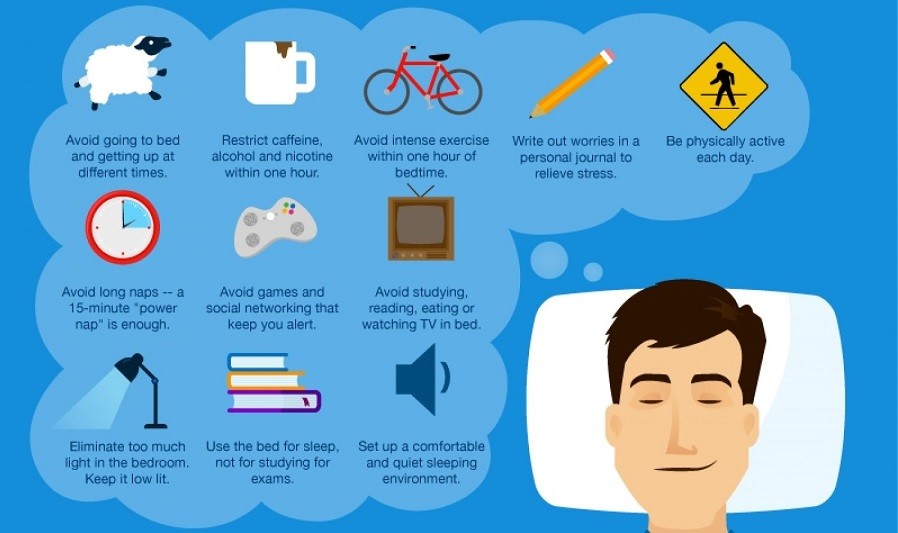 But don’t wait until it’s dark outside to try these for the first time. “You don’t want to do it the first time when you’re anxious,” Dr. Kennedy says. “You want to start really getting the skill down when it’s easy for you, then try it in more difficult situations.” If you’re using an app to guide you, try to practice until you don’t have to bring your device into the bedroom with you (because that can mess up sleep, too).
But don’t wait until it’s dark outside to try these for the first time. “You don’t want to do it the first time when you’re anxious,” Dr. Kennedy says. “You want to start really getting the skill down when it’s easy for you, then try it in more difficult situations.” If you’re using an app to guide you, try to practice until you don’t have to bring your device into the bedroom with you (because that can mess up sleep, too).
Need suggestions? We’ve got our iTunes stocked with wacky wind chimes from Dreaming with Jeff, produced by actor Jeff Bridges, and iSleep Easy, an app with a variety of guided meditations.
Lying in bed and worrying about your inability to fall asleep will not help.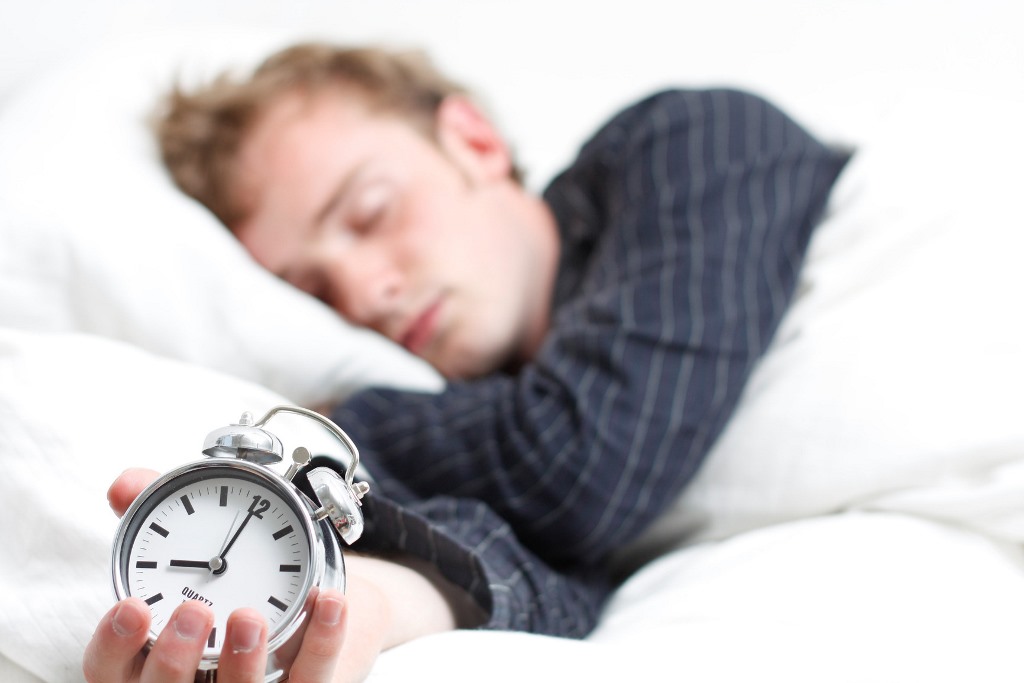 “The second you start feeling tense, go into another room until you start feeling sleepy,” says Professor Ancoli-Israel. You want to condition your brain to associate the bed with sleeping and nothing else, she explains.
“The second you start feeling tense, go into another room until you start feeling sleepy,” says Professor Ancoli-Israel. You want to condition your brain to associate the bed with sleeping and nothing else, she explains.
Feeling frustrated “creates a stress response where the body creates adrenaline,” says Dr. Kennedy. To combat this harmful feedback loop, divert your attention by reading, doing crossword puzzles, knitting, drinking tea, folding laundry or organizing closets until you start to feel drowsy. “It doesn’t matter, as long as it is relaxing to you,” she says.
Repeat after us: “I must stop staring at my clock. ” You could be waking yourself up even more, says Professor Ancoli-Israel. When you’re constantly checking the time, you’re putting pressure on yourself and creating a more stressful environment. Plus, Dr. Kennedy points out that your phone can suck you back into daytime stressors with every text, email or app notification. If you need to use your alarm clock or phone to ensure you rise on time, put it under the bed or in a drawer so you aren’t tempted to glance at it every five minutes.
” You could be waking yourself up even more, says Professor Ancoli-Israel. When you’re constantly checking the time, you’re putting pressure on yourself and creating a more stressful environment. Plus, Dr. Kennedy points out that your phone can suck you back into daytime stressors with every text, email or app notification. If you need to use your alarm clock or phone to ensure you rise on time, put it under the bed or in a drawer so you aren’t tempted to glance at it every five minutes.
If racing thoughts keep you up, consider jotting down what’s on your mind before you head to bed. Processing your feelings (good and bad!) can help you relax into a sleepier state of mind. “When you’re thinking through that stuff and you’re laying down, it can become circular,” says Dr. Kennedy.
By writing things down or making a list of tomorrow’s to-dos, you’ll tame any bouncing thoughts and turn them into a more linear narrative. Instead of endlessly worrying about the next day’s workload, you’ll have already plotted out how you’ll get everything accomplished before you hit the hay.
We include products we think are useful for our readers. If you buy through links on this page, we may earn a small commission. Here’s our process.
CE DSJ 8/6/20: Hi, Ashley. I noticed that several questions didn’t have a response, so I’m not sure if they’ve been addressed. Please review. Thanks.
Good sleep is incredibly important.
It helps you feel good and makes your body and brain function properly.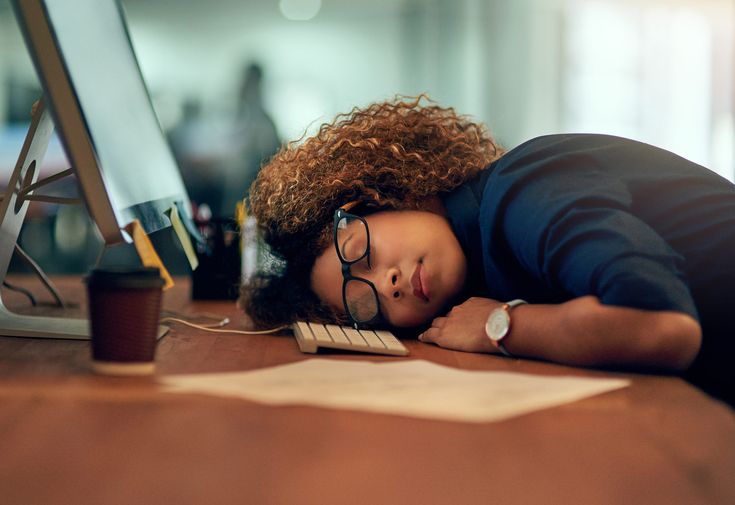
Some people have no problem falling asleep. However, many others have severe difficulty falling and staying asleep through the night.
Poor sleep can have negative effects on many parts of your body and brain, including learning, memory, mood, emotions, and various biological functions (1).
Here are 20 simple ways to fall asleep as fast as possible.
Your body temperature changes as you fall asleep. Your body cools down when you lie down and warms up when you get up (2, 3).
If your room is too warm, you might have a hard time falling asleep. Setting your thermostat to a cool temperature between 60–67°F (15.6–19.4°C) could help (4).
Individual preferences will vary, so find the temperature that works best for you.
Taking a warm bath or shower could also help speed up the body’s temperature changes. As your body cools down afterward, this can send a signal to your brain to go to sleep (5).
One literature review found that taking a hot bath or shower before bed could improve certain sleep parameters, such as sleep efficiency and sleep quality.
Sleep efficiency refers to the amount of time you spend asleep in bed as opposed to lying awake.
People who took baths or showers measuring between 104°F–108.5°F (40.0°C–42.5°C) 1 to 2 hours before bedtime experienced positive results.
They reported improvements in their sleep even if their baths or showers lasted for as little as 10 minutes.
More research is needed, but these findings are promising (6).
The “4-7-8” method that Dr. Andrew Weil developed is a simple but powerful breathing method that promotes calmness and relaxation. It might also help you unwind before bed (7).
It’s based on breath control techniques learned from yoga, and it consists of a breathing pattern that relaxes the nervous system. It can be practiced any time you feel anxious or stressed.
Here are the steps:
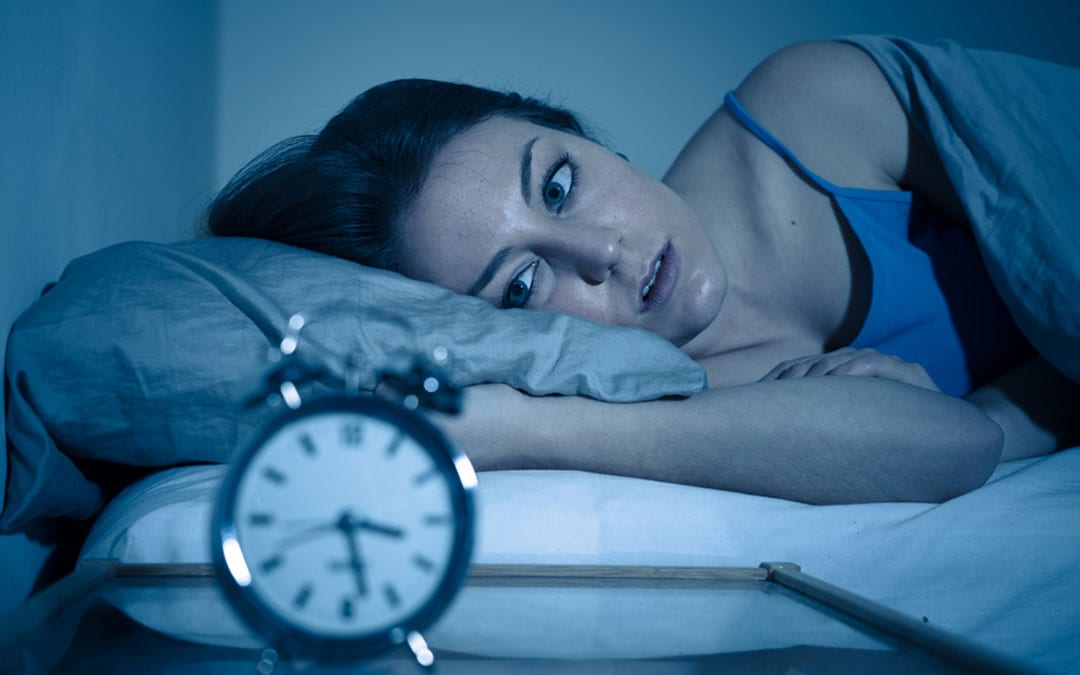
This technique can relax you and help you fall asleep quickly.
Many people find that setting a sleep schedule helps them fall asleep easier.
Your body has its own regulatory system called the circadian rhythm. This internal clock cues your body to feel alert during the day but sleepy at night (1).
Waking up and going to bed at the same times each day can help your internal clock keep a regular schedule.
Once your body adjusts to this schedule, it’ll be easier to fall asleep and wake up around the same time every day (8).
It’s also important to get 7 to 9 hours of sleep each night. This has been shown to be the optimal sleep duration for adults (1).
Lastly, give yourself 30–45 minutes to wind down in the evening before getting in bed. This allows your body and mind to relax and prepare for sleep (9).
Light can influence your body’s internal clock, which regulates sleep and wakefulness.
Irregular light exposure can lead to the disruption of circadian rhythms, making it harder to fall asleep and stay awake (10).
During the day, exposing your body to bright light tells it to stay alert. Both natural daylight and artificial light, such as the kind emitted from an e-reader, have this effect on your alertness (11, 12).
At night, darkness promotes feelings of sleepiness. In fact, research shows that darkness boosts the production of melatonin, an essential hormone for sleep. In fact, the body secretes very little melatonin during the day (13, 14).
Get out and expose your body to sunlight or artificial bright light throughout the day. If possible, use blackout curtains to make your room dark at night.
Shop for blackout curtains online.
When people are stressed, they tend to have difficulty falling asleep (15).
Yoga, meditation, and mindfulness are tools to calm the mind and relax the body. Moreover, they’ve all been shown to improve sleep (15, 16, 17, 18, 19).
Moreover, they’ve all been shown to improve sleep (15, 16, 17, 18, 19).
Yoga encourages the practice of breathing patterns and body movements that release stress and tension accumulated in your body.
Research shows that yoga can have a positive effect on sleep parameters such as sleep quality, sleep efficiency, and sleep duration (15, 16).
Meditation can enhance melatonin levels and assist the brain in achieving a specific state where sleep is easily achieved (17).
Lastly, mindfulness may help you maintain focus on the present, worry less while falling asleep, and even function better during the day (18, 19).
Practicing one or all of these techniques can help you get a good night’s rest and wake up reenergized.
It’s normal to wake up in the middle of the night. However, the inability to fall back asleep can ruin a good night’s rest (20).
People who wake up in the middle of the night often tend to watch the clock and obsess about the fact that they can’t fall back asleep.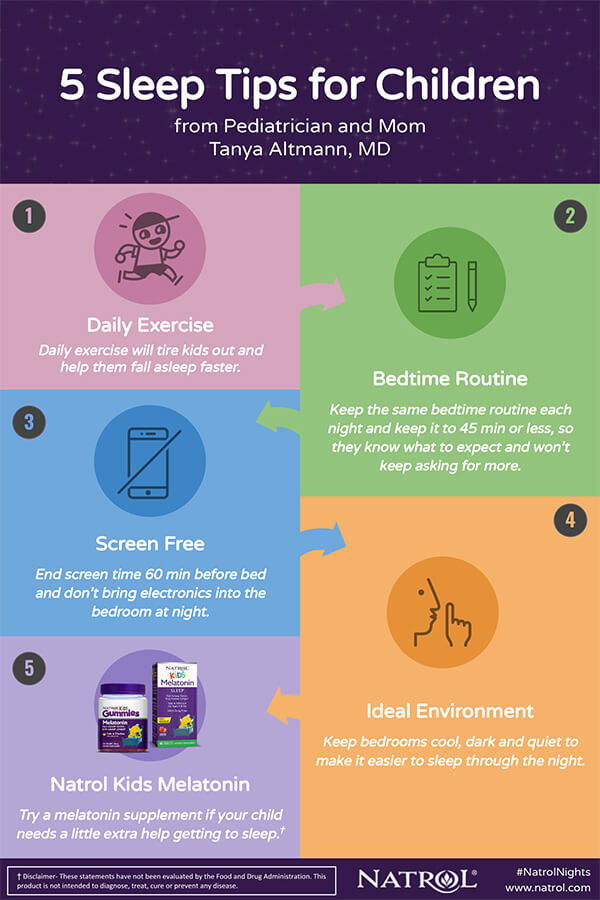
Clock-watching is common among people with insomnia. This behavior may cause anxiety about sleeplessness (21).
To make matters worse, waking on a regular basis without falling back asleep may cause your body to develop a routine. As a result, you might find yourself waking up in the middle of the night every night.
If possible, it’s best to remove the clock from your room. If you need an alarm in the room, you can turn your clock and avoid watching it when you wake up in the middle of the night.
Due to poor sleep at night, people with insomnia tend to be sleepy during the day, which often leads to daytime napping.
While naps of short duration have been linked to improvements in alertness and well-being, there are mixed opinions about the effects of napping on nighttime sleep.
Some studies have shown that regular naps that are long (at least 2 hours), and late may lead to poor nighttime sleep quality and even sleep deprivation (22, 23).
In a study of 440 college students, the poorest nighttime sleep quality was observed in those who reported taking three or more naps per week, those who napped for more than 2 hours, and those who napped late (between 6 p.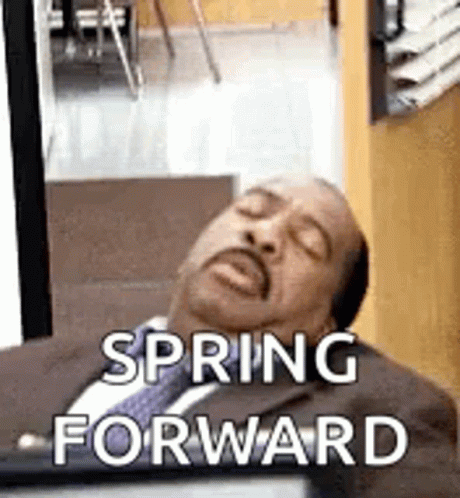 m. and 9 p.m) (22).
m. and 9 p.m) (22).
A 1996 study found that older adults who napped frequently had lower quality nighttime sleep, more depressive symptoms, and more limited physical activity. They were also more likely to be overweight than those who rarely took a nap (23).
A recent study of high-schoolers concluded that daytime napping led to shorter sleep duration and lower sleep efficiency (24).
Other studies have revealed that naps don’t affect nighttime sleep (25, 26).
To find out if naps are affecting your sleep, try either eliminating naps altogether or limiting yourself to a short nap (30 minutes or less) early in the day.
It seems that the food you eat before bed may affect your sleep. For example, research has shown that high-carb meals may be detrimental to a good night’s rest.
A review of studies concluded that even though a high-carb diet can get you to fall asleep faster, it won’t be restful sleep. Instead, high-fat meals could promote a deeper and more restful sleep (27, 28).
In fact, several older and newer studies agree that a high-carb/low-fat diet significantly decreased the quality of sleep compared to a low-carb/high-fat diet.
This held true in situations where the high-carb/low-fat diets and the low-carb/high-fat diets contained the same amount of calories (29, 30, 31).
If you still want to eat a high-carb meal for dinner, you should eat it at least 4 hours before bed so you have enough time to digest it (28).
Music can significantly improve quality of sleep. It can even be used to improve chronic sleep disorders, such as insomnia (32, 33).
A study of 24 young adults demonstrated that sedative music promoted deeper sleep (34).
Listening to Buddhist music may be another great tool for better sleep, as it can reduce the amount of time it takes you to fall asleep. This parameter is known as sleep onset.
Buddhist music is created from different Buddhist chants and is used for meditation (35).
Another 50-person study revealed that those who were exposed to soothing music for 45 minutes at bedtime had a more restful and deeper sleep compared to those who didn’t listen to music (36).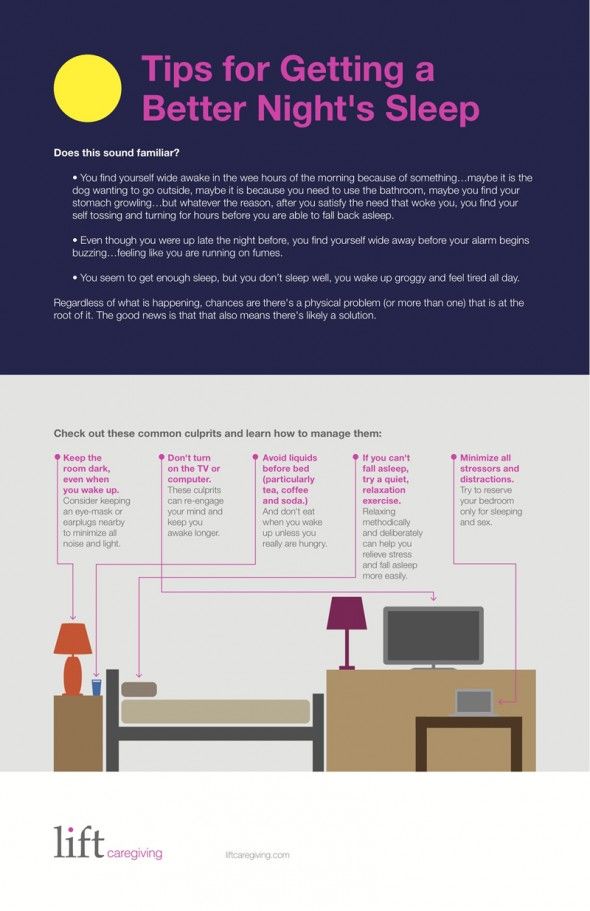
Lastly, if relaxing music isn’t available, blocking all noise could also help you fall asleep faster and promote uninterrupted sleep (37, 38).
Physical activity is often considered beneficial to healthy sleep.
Exercise can increase the duration and quality of sleep by boosting the production of serotonin in the brain and decreasing levels of cortisol, the stress hormone (39).
However, it’s important to maintain a moderate-intensity exercise routine and not overdo it. Excessive training has been linked to poor sleep (40).
The time of the day when you exercise is also critical. To promote better quality sleep, working out early in the morning appears to be better than working out later in the day (41, 42).
Therefore, moderate to vigorous exercise in the morning could significantly improve the quality of your sleep and how much sleep you get.
Get moving with activities like:
A comfortable mattress and bedding can have a remarkable effect on the depth and quality of sleep.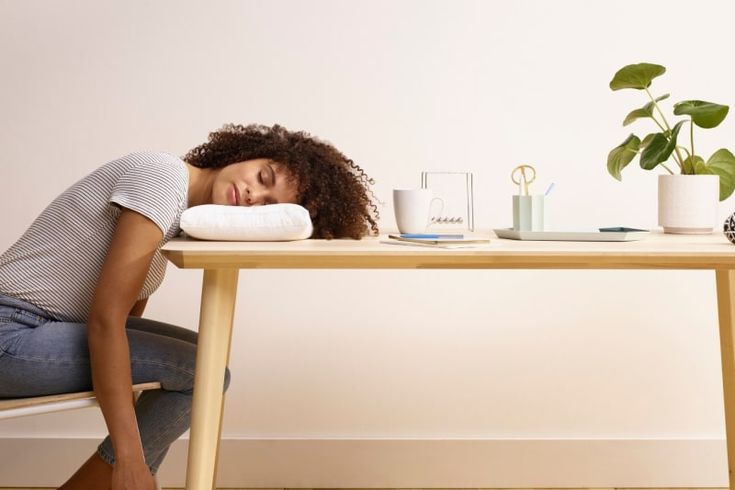
A medium-firm mattress has been shown to positively affect sleep quality and prevent sleep disturbances and muscular discomfort (43, 44).
The quality of your pillow is also crucial.
It can affect your:
One small study determined that orthopedic pillows may be better for sleep quality than feather or memory foam pillows (45).
Additionally, the use of a weighted blanket could reduce body stress and help improve your sleep (46).
Lastly, the fabric of the clothes you wear to bed can affect how well you sleep. It’s crucial that you choose comfortable clothing made of fabric that helps you keep a pleasant temperature throughout the night (47).
Products to tryHaving more comfortable bedding may make it easier for you to fall — or stay — asleep. Shop for bedding online:
- weighted blankets
- medium-firm mattresses
- orthopedic pillows
Using electronic devices late at night is terrible for sleep.
Watching TV, playing video games, using a cell phone, and social networking can make it significantly harder for you to fall — and stay — asleep (48, 49, 50).
This is partly because electronic devices emit blue light, which has been found to suppress melatonin (51, 52).
Using these devices also keeps your mind in an active and engaged state.
It’s recommended that you disconnect all electronics and put away computers and cell phones so you can ensure a quiet place, free of distractions.
You’ll be able to fall asleep much faster if you practice good sleep hygiene.
If you need to use your devices late in the evening, at least consider blocking the blue light with eyeglasses or a screen filter.
Shop for blue light blocking glasses or a blue light screen filter online.
Aromatherapy involves the use of essential oils. It’s commonly practiced by those who have trouble falling asleep, as it may help with relaxation.
A systematic review of 12 studies revealed that the use of aromatherapy was effective in improving sleep quality (53).
Popular scents with positive effects on sleep include:
Oil blends made with ingredients like lemon and orange were also effective at improving sleep quality (54, 55, 56, 57, 58, 59).
Although there are a variety of ways to use essential oils, many sleep studies are centered on inhalation aromatherapy.
An essential oil diffuser could be helpful in infusing your room with relaxing scents that encourage sleep.
Shop for essential oils online.
Some people have difficulty falling asleep because their thoughts keep running in circles. Research has shown that this can produce anxiety and stress, which can generate negative emotions and disturb sleep (60).
Journaling and focusing on positive thoughts can calm the mind and help you sleep better.
Writing down the positive events that happened during the day — or may happen in the future — can create a state of gratitude and happiness, downgrade stressful events, and promote more relaxation at bedtime.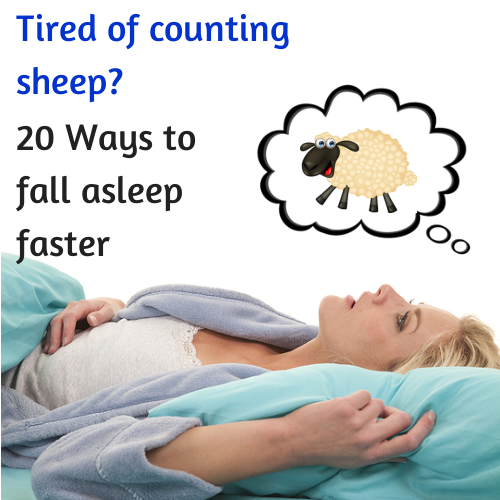
In fact, a study of 41 college students found that journaling resulted in reduced bedtime worry and stress, increased sleep time, and improved sleep quality (60).
Practice this technique by setting aside 15 minutes every night to write about your day. It’s important to focus not only on the positive events of the day but also on how you feel at the time.
A different study found that writing a to-do list, if only for 5 minutes, was even more effective than journaling at helping young adults fall asleep faster (61).
Caffeine is widely used among people to fight fatigue and stimulate alertness. It can be found in foods and beverages like:
This stimulant can have disastrous effects on your sleep quality and sleep duration (62, 63).
Although the effects of caffeine vary from person to person, it’s recommended that you refrain from consuming it at least 6 hours before bedtime (63).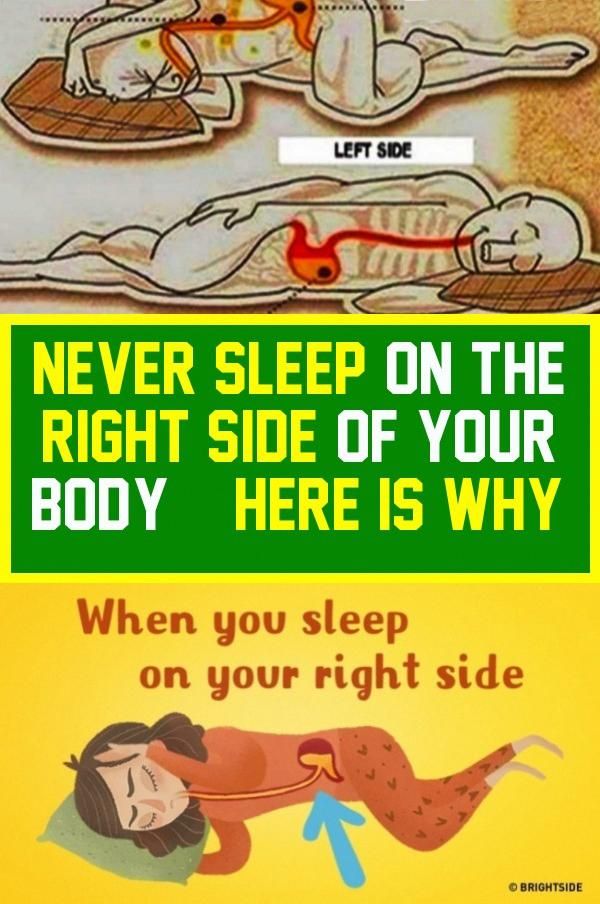
Instead, you could drink a soothing tea like chamomile tea. It’s been shown to promote sleep and relaxation. Other bedtime teas that help sleep include passionflower and magnolia (64, 65, 66).
Good quality sleep may depend on your body position during the night.
There are three main sleeping positions:
Traditionally, it was believed that back sleepers had a better quality of sleep.
However, research has shown that this might not be the best position to sleep in, as it could lead to blocked airways, sleep apnea, and snoring (67).
Although individual preferences play an important role in choosing sleep position, the side position seems to be linked to high-quality sleep (68).
Reading could be a good activity to help you wind down before bed. At least for kids, it seems that bedtime reading may promote longer sleep (69).
However, it’s important to understand the differences between reading from an e-book and a traditional paper book.
Electronic books emit blue light, which reduces melatonin secretion. Lowered melatonin levels make it harder for you to fall asleep and cause you to feel tired the next day (70, 71).
Therefore, it’s recommended that you read from a physical book in order to relax and improve your sleep.
It’s believed that if you go to bed and try to force yourself to fall asleep, your chances of succeeding drop dramatically.
Instead, you can try paradoxical intention. This technique involves trying to stay awake instead of forcing yourself to sleep.
It’s based on the idea that the stress and anxiety produced by forcing yourself to fall asleep can prevent you from relaxing and snoozing.
Research is ultimately mixed, but some studies have showed that people who adopt this technique tend to fall asleep faster (72).
Instead of lying in bed worrying and thinking about stressful things, visualize a place that makes you feel happy and calm.
In one insomnia study, participants were able to fall asleep faster after they were instructed to use an imagery distraction (73).
This technique helped them occupy their mind with good thoughts instead of engaging with worries and concerns during the pre-sleep time.
Picturing and concentrating on an environment that makes you feel peaceful and relaxed can take your mind away from the thoughts that keep you up at night (60).
Certain supplements can help you fall asleep faster.
They’ve been shown to encourage sleep either by boosting the production of sleep-promoting hormones or by calming brain activity.
Supplements that can help you fall asleep include:

Products to tryThe supplements above can help you sleep better and feel calmer. Shop for them online:
- magnesium
- 5-HTP
- melatonin
- L-theanine
- GABA
Having trouble falling and staying asleep is not only frustrating, but it can also affect your mental and physical health.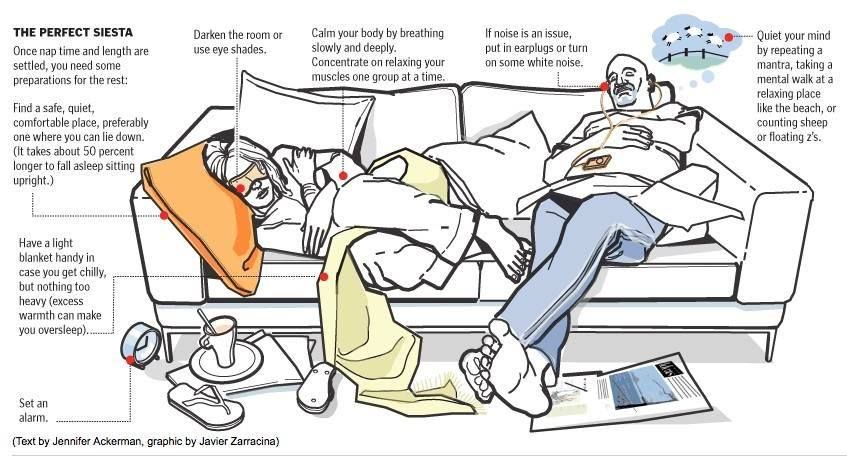
Using the techniques above can help you fall asleep quickly, while sleeping much better and having more energy the next day.
Do you spend more time trying to fall asleep than sleeping? You are not alone. Effort only causes an anxiety state that does not allow the brain to relax. And if the brain is not going to sleep, then it is difficult for the body to resist it. But there are science-proven tricks that will help you safely “turn off” the body in a matter of seconds. Let's talk about some of them.
Military method, or How to fall asleep in 10 seconds
Note: the technique described below takes 120 seconds, but, according to observations, it is the last 10 seconds that are decisive.
Lloyd Winter's book Relax and Win: Championship Performance talks about a US Navy pre-flight school program that helps pilots fall asleep in two minutes or less.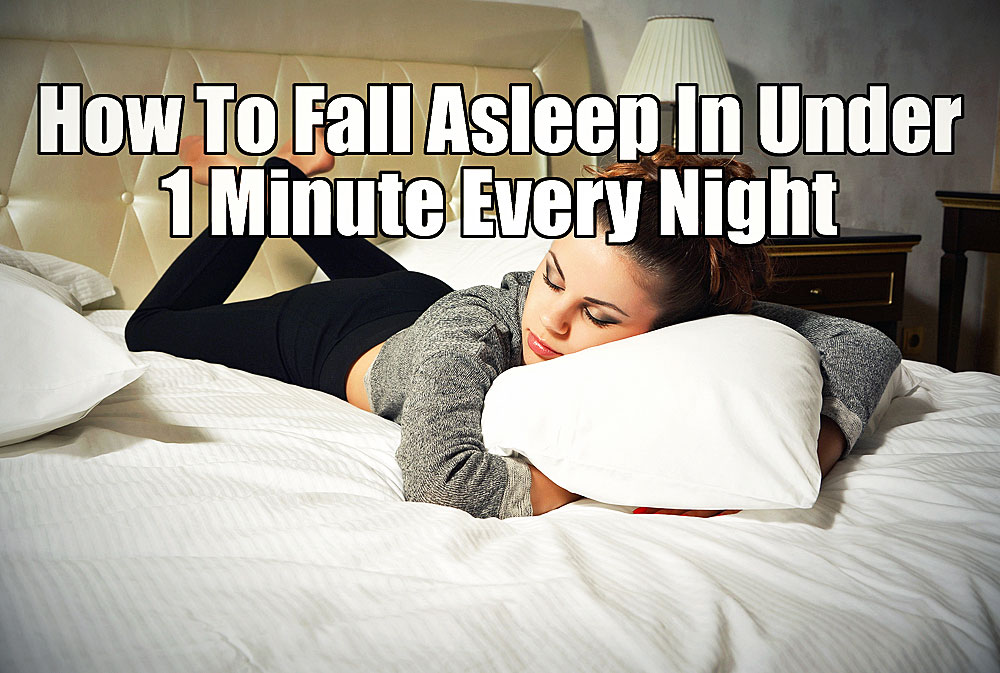 It took six weeks of practice to master the skill, but then it worked even after a cup of coffee or gunshots heard nearby. They say that the method helps even those who have to sleep sitting up.
It took six weeks of practice to master the skill, but then it worked even after a cup of coffee or gunshots heard nearby. They say that the method helps even those who have to sleep sitting up.
Instruction
1. Relax your entire face, including your mouth muscles.
2. Lower your shoulders to relieve tension. Leave your arms hanging down at your sides.
3. Exhale and relax your chest.
4. Relax your legs, thighs and calves.
5. Imagine something soothing and don't think about anything else for the next 10 seconds.
6. If the previous point does not work, say the words "do not think" over and over again for 10 seconds.
7. Here you should already be sleeping.
Didn't work the first time? Then you have to practice for some time to breathe properly and relax your muscles. In addition, the effectiveness of the method can be affected by attention deficit hyperactivity disorder and increased anxiety. Don't despair, we have a few more tips.
Don't despair, we have a few more tips.
Breathing and muscle relaxation, or how to fall asleep in 60 seconds
The next two techniques focus on the breath and muscles, allowing you to take your mind off the thoughts and get back to sleep. For beginners, they may take a little longer, with practice the efficiency increases.
Breathing method 4-7-8
Note: If you have a respiratory condition such as asthma or COPD, check with your doctor to avoid making your symptoms worse.
Instruction
1. Prepare: Raise the tip of your tongue to a spot on the roof of your mouth behind your two front teeth. Keep it there throughout the exercises.
2. Part your lips slightly and exhale through your mouth, making a whistling sound.
3. Close your lips and inhale quietly through your nose while counting to four.
4. Hold your breath for seven seconds.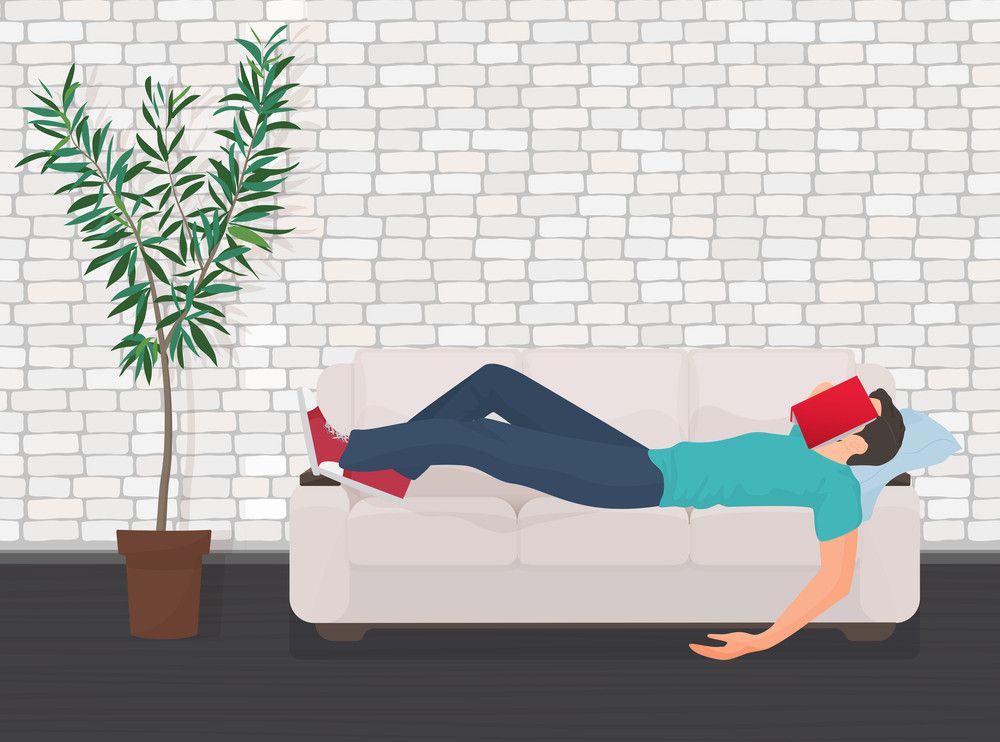
5. Exhale with a whoosh, counting to eight.
6. Repeat four times. Do not get hung up on the accuracy of execution, try to do it thoughtlessly. Let the body fall asleep if you feel that relaxation has come earlier than expected.
great gift
new
great present
Progressive muscle relaxation (PMR)
The point is to tense and then relax the muscles. Exercise helps to achieve calmness in the whole body. Before starting, use the 4-7-8 method, imagining how tension leaves the body when you exhale.
Instruction
1. Raise your eyebrows as high as possible for 5 seconds.
2. Then lower and feel the tension go away. Wait 10 seconds.
3. Smile broadly to feel the tension in your cheeks. Hold this facial expression for 5 seconds and relax.
4. Pause 10 seconds.
5. Squint with closed eyes. Hold for 5 seconds and relax.
6. Pause 10 seconds.
7. Slightly tilt your head back so that you can comfortably look at the ceiling. Hold for 5 seconds, and then relax and lower your neck onto the pillow.
8. Pause 10 seconds.
9. Continue to tense and relax the muscles in the same pattern, moving down - from the triceps to the chest, from the hips to the feet.
10. Allow yourself to fall asleep, even if you don't make it to the end.
While doing the exercise, focus on how relaxed and heavy your body feels when you feel good and comfortable.
Heavy artillery, or How to fall asleep in 120 seconds
If the previous methods didn't work, try these.
Forbid yourself to fall asleep
Surprisingly, such a paradoxical intention can be a good way. For those who suffer from insomnia, trying to sleep increases their anxiety levels. As soon as you stop forcing yourself, you relax and fall asleep.![]()
Imagine a peaceful place
If counting is too active in your brain, try using your imagination. In a 2002 study, Oxford University researchers found that people who did this fell asleep faster than those who simply tried to relax and received no guidance.
Instruction
Instead of counting sheep, try imagining a peaceful environment and the sensations associated with it, such as a waterfall, rushing water, an echo, the smell of damp moss. It is important that this image is imprinted in your brain and replaces the kaleidoscope of thoughts and worries.
Acupressure
While there is not enough research to say that acupressure works 100%. However, it is a very promising technique.
One method is to apply pressure to areas where there is particular tension (upper bridge of the nose, temples). There is also a set of exercises for insomnia. Some of them can be done in the supine position.
"Spiritual Gate"
1. Find a small hole on the inside of the wrist from the side of the little finger.
2. Gently press it in a circular motion for 2-3 minutes.
3. Press lightly on the left side of this point (facing the palm) for a few seconds, and then hold the right side (turning the palm away from you).
4. Repeat the manipulations with the other hand.
"Inner border gate"
1. Turn your palm over to your face and place three fingers down from the crease of your wrist.
2. With your thumb, apply even pressure to this point midway between the two tendons.
3. Massage in circular motions until you feel muscle relaxation.
Pool Wind
1. Put your palms together and open them to form a kind of bowl.
2. Then put your hands in this position to the base of the skull from behind so that the thumbs touch the junction of the neck and head.
3. Apply deep and steady pressure to the area, massaging it in a circular or upward motion.
4. Breathe deeply and notice how your body relaxes as you exhale.
Maximum training
If you have tried these methods and still cannot fall asleep within two minutes, check the following points:
- hide the clock
- Take a warm shower before bed
- open a window to ventilate the room,
- put on socks
- practice soft yoga for 15 minutes,
- put the phone away from the bed,
– arrange an aromatherapy session with lavender, chamomile or sage oils,
Eat dinner early to avoid stomach stimulation before bed.
Also, check the noise level in the bedroom: hang blackout curtains, turn on white noise, put in earplugs. A lot depends on the mattress, pillow and blanket. Blue Sleep products are designed in such a way as to provide the most natural anatomical position of the spine and remove excess heat. Independent springs will protect against pushing and bouncing if your partner rolls over or gets up.
Once you've done all of these things and are as comfortable as possible, go back to the military method or the 4-7-8 breathing pattern and you'll see it works.
March 7 Life
Proven methods to quickly relax and turn off thoughts before sleep.
Share
0 Strictly speaking, this method takes more time, but it is the last 10 seconds of exercise that should put you to sleep. Initially, it was developed for the military, who need to fall asleep in conditions that are not the most suitable for this. They say that it took them six weeks to train, but then they could sleep as they liked: sitting, with the sounds of shelling, and even after drinking coffee.
Here's what to do after you're comfortable in bed:
You should fall asleep in the next 10 seconds after doing these steps.
The breathing technique called "4-7-8" will help with this. At first, you may need more than 60 seconds, but gradually you will train to fall asleep during this period.
First, place the tip of the tongue so that it rests on the palate behind the two front teeth. He must be in this position at all times.
Do four breaths in this way. If you feel ready to fall asleep after the second or third, don't force yourself to continue.
If you have any respiratory condition, it is best to consult your doctor before trying this technique. Or choose other options.
In this exercise, you first tense and then relax your muscles. This will help you feel the tension leaving your body. After you have relaxed one muscle group, concentrate on the pleasant sensations for a few seconds, and only then move on to the next part of the body.
In the process, you will feel sleepy. If you did not have time to work out all the muscles and fell asleep, it's okay. In the event that after this exercise you still can not sleep, do one of the following.
Paradoxically, this helps you fall asleep faster. This method is recommended for people suffering from insomnia, and, according to research, it really works. Try it if you usually get nervous about not being able to sleep.
If your brain is too active due to the need to count in the previous exercises, try turning on your imagination instead of counting. According to scientists, people who use images to relax fall asleep faster than those who simply try to distract themselves from thinking.
Try to visualize in detail the peaceful place and the emotions you have when you are in it. For example, imagine a waterfall in a forest. Imagine the sound of running water, the singing of birds, the smell of wet grass. The place can be real or fictional. The main thing is that this image occupies all your thoughts, not letting thoughts about business or worries about tomorrow seep into your head.
The methods described above will help you fall asleep faster, but there are additional ways to make falling asleep easier. They are worth including in your evening ritual, no matter what exercise you choose.